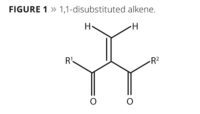advertisement
Oven Curing Efficiency Improved with Temperature-Measurement Devices
For industrial oven users, preventing under- and overbaking is a big challenge when curing surfaces or interior coating. Underbaked paint or primer creates a soft surface film that allows the material to rub off, sometimes while the part is still on the assembly line, thereby resulting in low durability. Overbaking makes the coated surfaces of a component or piece of machinery very brittle and inflexible, allowing the coating to crack or chip.
The primary objective of heat curing departments is to cycle as many parts per hour as possible through their ovens while maintaining proper curing periods. Temperature control is crucial in achieving a proper cure and keeping assembly lines moving.
Curing ovens, however, are generally not equipped with precise heating control. Consequently, oven users in industrial production environments don’t know whether their ovens will properly cure a particular part, especially when testing a new coating.
Two coatings manufacturers recently discovered the value of precise temperature control for their operations.
PPG Industries
PPG Industries Inc., Pittsburgh, is the world’s largest supplier for electrodeposition coatings, or e-coats. Its Coatings & Resins Application Lab in Flint, MI, tests and demonstrates coatings and primers, and conducts curing analysis for these materials at the same facility.The company has maintained a coating test facility at its Flint plant since 1985. The central goal of this facility is to demonstrate product workability and to determine curing times and temperatures — procedures that were difficult to monitor with traditional recorders and smoke chart measurement equipment.
A PPG test technician’s primary mission is investigating new coatings for the auto industry, and testing new combinations of existing or traditional coatings used on new vehicles. Their old-style recorders were cumbersome to use and inaccurate.
“With the old recorders we were forced to manually set up all the data descriptions, which was very tedious and time consuming,” said Mike Masters, a robotics specialist at the PPG test lab. “Compounding the problem was the fact that the software we had to work with wasn’t very user friendly.”
He says that charging the batteries of the measurement devices was a constant chore for operators. The batteries had to be recharged overnight after just one day’s testing before they could be used again. The old-style recorder also needed the battery to power its memory packs. Before data could be used, the memory pack needed to be connected into a transducer to download the information. In a worst-case scenario, the memory pack could lose stored data if battery power was lost while it was in operation, forcing workers to reset basic parameters.
“The old memory packs were a pain to use because we would have to reformat the device every time we did another test, even if it was similar to the previous one,” Masters said. “We had to re-input information on the number of probes used, all of the different temperature ranges, what types of curing we were doing, etc., since we couldn’t store any of this data.”
Clearly, PPG needed a precise, easy-to-use measurement device that would streamline its test methodology and allow its test technicians to define the curing window accurately.
But what happens when a manufacturer needs to monitor the inside temperature of oven-cured parts as well?
PD George
The heat curing of large electric motors and transformers poses special challenges for manufacturers. One company in this business, PD George Co., St. Louis, produces varnishes and magnet-wire coatings for the electrical motor and transformer industries.PD George is aware of manufacturers’ curing difficulties, as they assist clients in testing new coatings. When a manufacturer decides to implement a new coating, PD George travels to its plant to perform heat measurement tests. Their customers’ ovens average 30 feet wide, 20 feet tall, and 60–80 feet long. Most have internal conveyor belts that are 200–300 feet long.
“Since our clients’ curing ovens don’t always work properly, we help them measure oven effectiveness and then set up production parameters,” said Al Holden, an area sales manager for the company. “Quite often, their oven temps will fluctuate plus or minus many degrees throughout the curing.”
The curing process is crucial for electric motors and power transformers, especially if they run at high rpms. If the coating is too soft on a high-speed motor, it could heat up, melt and drip out of the windings. Likewise, poor curing could cause the windings to loosen and ruin the motor. Consequently, such coatings must be heat-cured for efficiency and durability.
However, curing very thick coatings both inside and outside the windings of electrical machinery adds another challenge. For example, even though oven temperature is set for 300º, the interior of a 150-lb motor will be many degrees lower. Some manufacturers will preheat the piece up to 100º before curing starts, but this procedure could take up to an hour to bring the interior to proper temperature.
“Until recently, we were using traditional data recorders that weren’t very accurate or easy to use, so testing was complex and time-consuming,” Holden said. “With the old recorders, there was no way to get an accurate reading for the part’s interior, so we were never sure that it was totally cured. It was usually an educated guess because we never knew if it peaked out at the right temperature.”
Sometimes test technicians attached a sensing probe to the interior with wires running outside the oven to a thermocouple, Holden said, but this procedure was difficult and inaccurate. For example, if the client had a 300-foot conveyor line, the wires would have to be 300 feet long as well, which caused problems as the parts rode the belt through the oven.
Mathematical calculations were necessary to determine curing times and temperatures inside the windings, another time-consuming process.
“Even with all the math calculations, we were never sure if the interior of the coils was cured properly,” Holden said. “And it was very hard to maintain consistent temperatures during the whole process.”
He said that charging the batteries on the old-style devices needlessly prolonged the measurement process. “It would take several days if we wanted to do consecutive runs with the other recorders, because the recharging took so long,” he said. “We also had to reset the memory packs after each use.”
After research, both firms discovered a device that would improve their measuring precision: the temp-gard® from BYK-Gardner USA.

Temp-gard: The Solution
The temp-gard is a compact data logger with a built-in LCD display, housed in a stainless-steel thermal protective case that allows it to remain in the ovens during testing. Up to eight object or air-temperature probes can be connected to the device at one time for multiple readings.The measurement device comes with BYK-Gardner’s temp-chart software that can document the entire curing process. It can also activate customer and process-specific data, and analyze temperature profiles to optimize curing.
Using the new instrument, PD George’s technical staff is able to attach five sensor probes to each part for more precise measurement during curing.
“We’ve only been using the temp-gard for a short time, but the guesswork has already been taken out of the process,” Holden says. “Since we can now put two probes right into the interior of the motor, we can determine curing times and temps very accurately, without wires running all over the oven to do it. And we’ll never have to worry about doing all of those time-consuming math calculations, since we now know exactly what’s going on inside the motors.”
Masters at PPG said, “The temp-gard helps us define the curing window very precisely. This is especially useful to us because we have a hard time keeping temperatures consistent in our curing ovens. The temp-gard helps us determine how wide a window is available for proper curing.”
Battery problems were also resolved. The device’s batteries can last for up to 250,000 readings, allowing operators to function for weeks, even months, without battery charges. A standard PCM memory card is used for easy data storage and downloading of test data to remote PCs.
Memory packs never need resetting with the new measuring device. “Now anyone in our facility can set up a specific template for testing and reuse it as many times as they want, even if changes are made after each test,” Masters said. “After testing is completed, our technicians can access the same test data stored in the PCM card. The PCM card eliminates a lot of set-up time and menu hopping with a truly stellar software package.”
Holden says that PD George’s sales staff can take the new memory cards with them. If necessary, access to specific information on the PCM cards can be securely locked.
“The temp-gard has revolutionized the way we perform oven curing tests,” said Holden. “The unit is compact, making it very easy for our salespeople to carry across country when we visit our clients’ plants.”
Using the temp-chart software and the PCM card, PPG’s test personnel can now print out a variety of reports, check oven consistency, and analyze final test results. Their automotive clients are now able to closely simulate conditions in PPG’s test ovens using the precise data collected by the device.
“Our automotive clients love these printouts because they are so graphic,” Masters said. “The software allows us to photograph the test car body with a digital camera with all the probes in place, then add pictures to our printed reports.
“We’ve been able to streamline our test procedures with the temp-gard to the point where we can tell auto manufacturers very precisely what they need to do for excellent production results in their paint department,” he said. “And since we’ve speeded up our testing process, we’re able to serve our clients more quickly and efficiently. The temp-gard has served us very well so far.”
For more information on temperature-measuring devices, contact BYK-Gardner, 9104 Guilford Road, Columbia, MD 21046-2759; phone 800/343.7721; fax 301/483.6555; visit www.byk-gardner.com.
Links
Looking for a reprint of this article?
From high-res PDFs to custom plaques, order your copy today!






